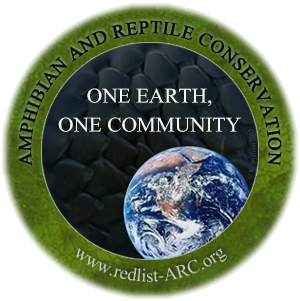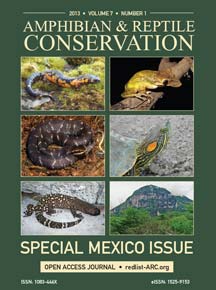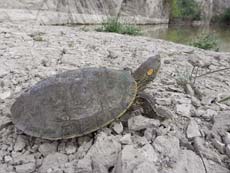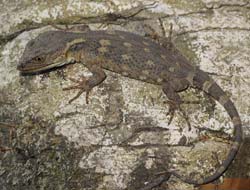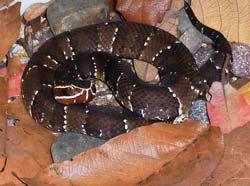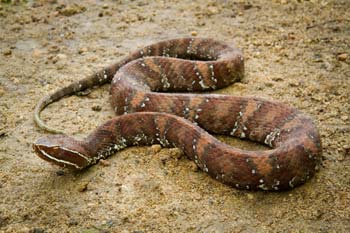|
VOLUME 7 (1) MEXICO
ISSUE
INTERNATIONAL CHAPTER - AMPHIBIAN
AND REPTILE CONSERVATION
NOTIFICATION: This website and its affiliates are the official Internet website portals
for the Amphibian and Reptile Conservation journal and our global conservation network. We
own all copyright, exclusive of authors copyright, produced by any proxy fraudulently presenting as
Amphibian and Reptile Conservation including the fraudulent highjacker journal
www.amphibian-reptile-conservation.org as published by the "Amphibian and Reptile Conservation
organisation" an illicit group led by Craig Hassipakis. Craig Hassipakis has a long and dismal
history of fraudulent activities, including recently committing perjury in an attack on our global
conservation network, as we document see Internet Fraud.
The Mexican region provides habitat for over 849
species of reptiles and amphibians. Here Amphibian and Reptile Conservation journal
presents conservation re-assessments for the region based on the EVS
measure in two parts. Other articles include taxonomic reevaluation and conservation
assessment of the common cantil, Agkistrodon
bilineatus (Squamata: Viperidae) and the
beaded lizard, Heloderma
horridum (Squamata: Helodermatidae)
For notification
of the publication of our future articles on Mexican herpetofauna please join our members list at MEMBERSHIP
Table of Contents
Summary: Summary: We reassess the conservation status of the
reptile fauna of Mexico based on the use of the EVS (Envrionmental Vulnerability Score) Measure. We
also update the content of the reptile fauna from that indicated in the book Conservation of
Mesoamerican Amphibian and Reptiles (2010) to 849 species. Our results very widely from
those obtained during an IUCN workshop held in 2005. Based on these results, we provide a set of
eight recommendations and conclusions of importance to individuals dedicated to reversing trends of
environmental degradation and biodiversity decline in Mexico.
Left: Agkistrodon
bilineatus, Photo by Javier Alvarado. Right:A. russeolus,Photo by Kevin Zansler,
courtesy of Robert A. Thomas.
Summary: Several
lines of evidence suggest that populations of cantils (Agkistrodon bilineatus, A.
taylori) are in decline. Pronounced differences in conservation assessments (IUCN,
Environmental Vulnerability Scores) led us to conduct a taxonomic reassessment of the common cantil
(A. bilineatus), to determine if the recognized subspecies merit specific status. Based on
morphological, biogeographical, and DNA-based evidence we elevate the three previously recognized
subspecies of A. bilineatus to full species. Given this taxonomic reassessment, we examine
the conservation status of the newly elevated taxa and provide conservation
recommendations.
|
Taxonomic reassessment and conservation status of the beaded lizard,
Heloderma horridum (Squamata: Helodermatidae). 2013.
Randall S. Reiserer,
Gordon W. Schuett,
Daniel D. Beck. Amphibian & Reptile
Conservation 7(1):
74–96.
Low resolution PDF 920K
High res. PDF
3300K
|
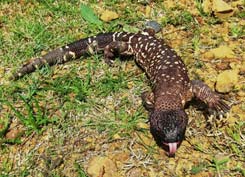 |
xxx
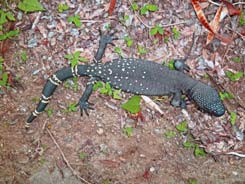 |
|
Left:
Heloderma
horridum, Photo by Javier
Alvarado. Right: H.
c
harlesbogerti, Photo by Daniel
Ariano-Sánchez.
Summary: The beaded lizard (Heloderma
horridum) is threatened by human persecution, habitat degradation, and recent
climate change. Recent DNA-based studies of the beaded lizard suggest that the
current use of subspecies underestimates their biodiversity and that species status
is warranted. Based on multiple lines of evidence, including a review of the use of
subspecies in taxonomy, we elevate the four subspecies of beaded lizards to full
species: Heloderma alvarezi (Chiapan beaded lizard), H.
charlesbogerti (Guatemalan beaded lizard), H. exasperatum (RÃo Fuerte
beaded lizard), and H. horridum (Mexican beaded lizard). Finally, we
propose a series of research programs and make conservation
recommendations.
|
A reassessment of the
conservation status of the amphibians of Mexico based on the
EVS measure. 2013.
Larry D. Wilson,
Jerry D. Johnson,
Vincente Mata-Silva. Amphibian & Reptile Conservation
7(1): 97–127.
Low resolution PDF 970K
High res. PDF
3300K
|
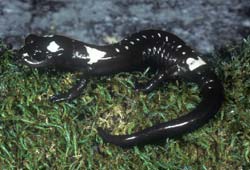 |
xxx |
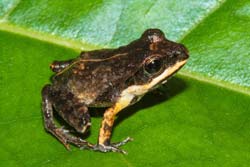 |
| |
|
|
|
Left: Pseudoeurycea
naucampatepetl, Photo by James Hanken.
Right: Craugastor
hobartsmithi, Photo by Iván Trinidad
Ahumada-Carrillo.
Summary:
Global amphibian population decline is an environmental
super-problem with broad impact on the diverse and highly
endemic-rich Mexican amphibian fauna. Results using the
Environmental Vulnerability Score algorithm demonstrate that this
fauna is highly imperiled, just like the Mexican reptile fauna, as
illustrated in a companion paper in the Special Mexico Issue. A
major paradigm shift in human thought and action will be necessary
for this problem to be resolved. Accordingly, we provide five
broad-based recommendations.
|
|
Patterns of physiographic distribution and
conservation status of the herpetofauna of Michoacán,
Mexico. 2013. Javier Alvarado-DÃaz, Ireri Suazo-Ortuño,
Larry D. Wilson, Oscar
Medina-Aguilar. Amphibian & Reptile
Conservation 7(1):
128–171.
Low resolution PDF 1450K
High res. PDF
3960K
|
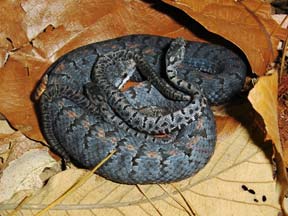 |
xx |
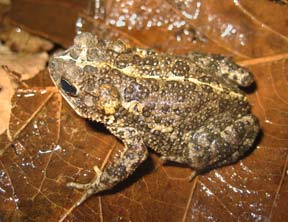 |
| |
|
Left:
Crotalus tancitarensis,
Photo by Javier Alvarado-DÃaz. Right:
Incilius pissinus, Photo
by Oscar Medina-Aguilar.
Summary: Within highly biodiverse
Mexico, the state of Michoacán is a major center of herpetofaunal
diversity and endemicity, with a higher proportion of endemicity
(66.0%) than that reported for the country as a whole. The
herpetofauna of the state consists of 215 species, including 54
amphibians and 161 reptiles, classified in 96 genera and 38
families. We examined the physiographic distribution of the
herpetofauna of Michoacán and found that among the five recognized
physiographic provinces, almost one-half of these species occur in
a single province. The largest number of species is found in the
Sierra Madre del Sur, with slightly fewer encountered in the
Balsas-Tepalcatepec Depression and the Transverse Volcanic Axis. We
analyzed the conservation status of the state’s herpetofauna using
the EVS measure, and concluded that about 40% of the species are
categorized at the highest level of environmental vulnerability. We
provide seven recommendations for the protection of Michoacán’s
herpetofauna in perpetuity.
|
|
|
|
COPYRIGHT
This work is
licensed under a Creative Commons Attribution-NonCommercial-NoDerivs
3.0 Unported License.
Attribution — You
must attribute the work in the manner specified by the
author or licensor (but not in any way that suggests that
they endorse you or your use of the work). Required
attribution for any material on this website material
must include www.redlist-arc.org
Noncommercial — You may
not use this work for commercial purposes.
No Derivative
Works — You may not alter, transform, or
build upon this work.
Second Party
Archiving - All material on this
website including articles and other PDFs is provided by
Amphibian and Reptile Conservation for private/research
use. Subject to authors copyright, deposition in public
libraries or on websites without permission is
prohibited.
|
|
|

